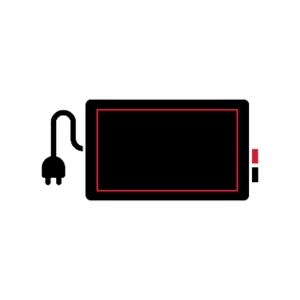Deep cycle battery maintenance – Why is it important?
Deep cycle battery maintenance is very important if you want to get the most out of your batteries. A lot of people unfortunately do not know how to maintain their deep cycle batteries, and in effect, they kill their batteries. Now, they normally think it’s the battery’s fault, but in fact the battery user failed to maintain and use their batteries properly. In order to avoid killing your battery, it is extremely important that you read this blog entirely and pay special attention to what you’re about to learn.
What is a deep cycle battery?
Deep cycle batteries are AGM batteries designed for deep cycling. In other words, they are designed to have power taken out of them over a period of time and then being recharged once again. The other type of battery is the starting battery, sometimes referred to as a cranking battery or a car battery. These batteries are designed to provide a lot of power upfront, but they are not designed to have power taken out of them over a long period of time. This specific blog post will not be discussing car battery maintenance. It will instead discuss deep cycle battery maintenance. There is a big difference between the two battery types and how you maintain them!
You can read more about car batteries here:
The most important thing with any battery is the depth of discharge, usually referred to as cycling the battery. If you want to have a long lasting battery, it’s important that you recognize how deep your discharging the battery (how much power you take out of it) and how often you’re doing so. If you’re discharging the battery very often, then it’s going to have a shorter life. However, if you just take a little bit out of the battery and you top it back up again, then the battery is going to have a much longer life. Following deep cycle battery maintenance guidlines will definitely help your battery live longer.
Don’t over discharge your battery
An absolute worst case is discharging the battery until it’s completely flat. Many people have done that because it is easy to do. Leave a light turned on in your caravan without any protection in place, the battery will just keep going flatter and flatter till it gets down to zero volts. In fact, a battery is actually flat at 11.8V. That’s when the battery is at “zero”. You can still take out more power from the battery and drain it down to 0V, but that would completely kill the battery. With pretty much all of the batteries on the market regardless of brand, if you discharge them below 10.8V, you will avoid your warranty because you would have destroyed the battery. This is why avoiding over-discharging your battery is important to include to your deep cycle battery maintenance list.
What is Battery Voltage?
Let’s explain in a very simple way what battery voltage is. Voltage is basically how full a bucket of water is. If your battery is more charged, the voltage is higher. If the battery is not charged, the voltage will be lower. The following chart represents the relationship between the battery’s state of charge and its voltage.
| State of Charge | Voltage |
| 100% | 12.7-13.2 |
| 75% | 12.4 |
| 50% | 12.2 |
| 25% | 12.0 |
| Discharged/Flat | 0-11.8 |
So, when the battery is fully charged, it would have a voltage between 12.7-13.2 volts. As the battery comes down, or becomes discharged, the voltage will decrease. For example, if the battery is only 75% charged, the voltage of the battery would be 12.4V. Similarly, if a battery is only 50% charged, it would have a voltage of 12.2V, and so on. Keep reading to understand how battery voltage is related to deep cycle battery maintenance.
Regularly measure the voltage of your battery
One of the most common ways we realize with people who kill their batteries is that they don’t have any way of measuring the voltage. It is very important for anyone using a battery to know how to measure its voltage. Deep cycle batteries are maintenance-free, which means you don’t need to fill them up with water, but it doesn’t mean you don’t look after them. So how do you measure the voltage of your battery? The simplest way is to use a multimeter. If you have a 12V system, you need to have a multimeter; it is not an option. At least, you need to have a way of knowing what the voltage of your battery is. Without knowing the voltage, you have no idea whether the battery is charged or flat. Being able to measure the voltage of your battery is essential to deep cycle maintenance. Why? Well, if you don’t know your battery’s voltage, you won’t know how charged your battery is. In other words, you wouldn’t know whether you should continue using (discharging) your battery or if you should stop using it, in order to avoid it from going flat.
An alternative tool you can use instead of a multimeter is a voltmeter. However, In order to ensure you get accurate volt readings with a voltmeter, make sure the voltmeter has short wires connected to the battery. If your voltmeter is far away from the battery, you’ll need to make sure you have thick cables connected between the voltmeter and the battery, in to determine accurate voltage readings. This is because if the cables are too thin and very long, part of the voltage will be lost on its way from the battery to the voltmeter, causing the voltmeter to have lower volt readings.
Recharge your battery as soon as you can
Ensuring that you recharge your battery as soon as possible is a critical step to deep cycle battery maintenance. Reminder: never discharge the battery below 11.80 volts. And even better, when you are using your battery, make sure you put back what you take out. So in an irregular situation, let’s say you’re camping on the beach, you’ve got a portable fridge running and it’s using up power. At night time, the battery will be discharged, so in the day time, the solar panels you’ve got need to be big enough to replace the power that was lost over night, while also running the fridge. So it’s important in most situations, the battery is recharged to its full capacity as often as we can. Of course, that’s unavoidable sometimes when camping. For example, you might be camping in an area without a lot sun, or you might not have solar panels installed. In these cases, make sure when you get home, to put the battery on a battery charger.
Select a charger that has 10% of your battery’s capacity
When buying an AGM battery charger, you should select a battery charger that can deliver about 10% of the battery’s capacity. For example, if you have a 100Ah battery, you should select a 10Ah battery charger. All AGM batteries, including deep cycle batteries, are designed to only take a maximum of 30% charging power of their capacity. So, if you have a 100Ah battery, the maximum charging capacity the battery will accept is 30Ah. In other words, if you have a 100Ah battery, don’t use a charger larger than 30Ah. Even if you do, it will be useless because the battery wouldn’t take more than 30Ah. The only advantage of going for a bigger charger is that the battery will charge faster. However, too big of a charger will kill your battery in the long-run, so it’s best to stick with the recommended battery charger that delivers 10% of your battery’s capacity.
For more information, you should read our other blog post: How to select an AGM battery charger.

If you have any questions or any additional tips or deep cycle battery maintenance, please share them below in the comments!


















I spent a lot of time to locate something like this
Thanks to the excellent guide
Hi
Thank you very much it helps o lot, understanding how AGM Batteries work
Hurrah, that’s what I was searching for! thanks Canbat of this article. I know know how to maintain my deep cycle battery!
Nice article. I really appreciate your efforts put in this blog post about ”Deep cycle battery maintenance”. This post may help those people they have no idea about deep their cycle battery and why it is important to maintain it.
So basically, the difference between a deep cycle battery and a regular lead acid battery is that you can discharge a deep cycle battery more, which means it’ll provide more power, or I guess it’ll power your equipment for a longer period of time.
I put one of these in our sandrail, it was one of their smaller ones, about 5in wide, 10in long, so we could mount it behind the seats. man its been an impressive little guy. sandrail sits all year and it starts hard but this thing always holds a charge